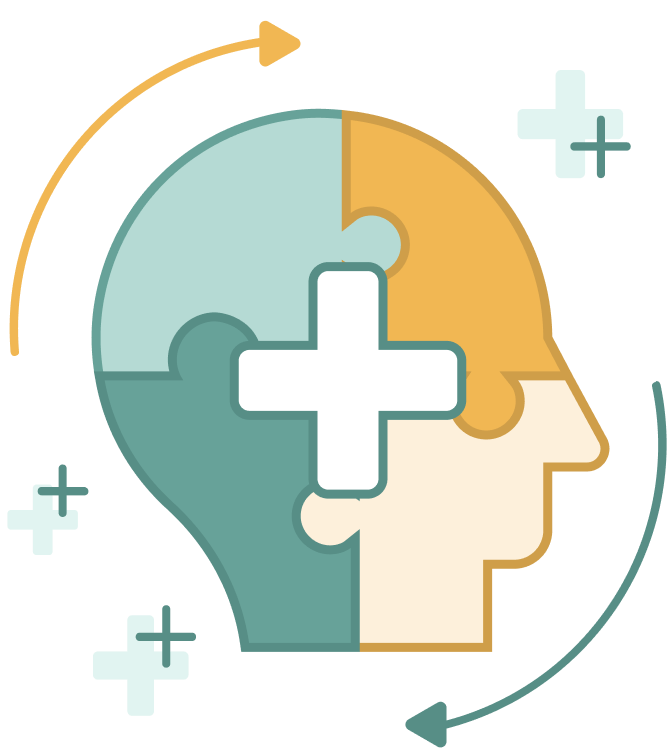
Alcohol and drug addiction are difficult to handle alone. Admitting a problem and seeking help is an important first step for anyone seeking long term sobriety. Many people who have made the decision to get drug and alcohol treatment services are likely to be overwhelmed by the wide variety of substance abuse programs out there. The design and structure of alcohol and drug treatment programs differ from facility to facility because there are many different kinds of people seeking addiction treatment. Depending on an individual’s flexibility and resources, they might find a certain kind of treatment program more accessible or readily compatible with their lifestyle than another. The most important reason for the diversity of substance abuse programs is that addictions also differ widely. People who need higher levels of care should opt for a more intensive treatment program that can meet all their needs.
The American Society of Addiction Medicine outlines 5 levels of care for people with substance use disorders, based on severity of addiction. However, they emphasize that these levels of care should be interpreted as a continuum. The process of recovering from a substance use disorder takes time, and as a person progresses, they might find their needs changing over time. As a result, an individual might find themselves jumping from one level of care to another.
Partial Hospitalization Programs (PHP) are a great option for individuals who want the intensity and structure of an inpatient treatment program with the flexibility of an outpatient program.
Intensive Outpatient Programs (IOP) provide individuals with a thorough, daily regimen of group and individual therapy that newly sober individuals need in the first few months of recovery.
Outpatient treatment programs are an effective and very flexible kind of treatment program for individuals struggling with addiction, mental health and impulse control disorders.
Aftercare treatment programs are services that people who graduate from inpatient and outpatient programs are advised to make use of to facilitate long term sobriety after leaving treatment.
This level of care is designed for individuals who have begun to exhibit tendencies in the direction of a substance use disorder but have not been clinically diagnosed. They might engage in regular substance abuse and have experienced some of the adverse effects, but they still have their lives somewhat together. Seeking drug abuse treatment programs or alcohol abuse treatment services at this time is not jumping the gun. In fact, getting care preemptively before an addiction gets out of hand is the best way to prevent the devastating personal losses that addiction usually brings. Substance use disorder is a progressive illness. It should be treated as soon as it is recognized; there’s no reason to wait until ones life has been wrecked beyond recognition.
For individuals who have recognized a need to stop drinking or using drugs, support groups and 12-step programs like Alcoholics Anonymous or Narcotics Anonymous are often the best course of action. These programs, whose only requirement for membership is a desire to stop drinking or using, are available free of cost and are widely available. 12-step meetings provide people of all ages and backgrounds with a sober social support system. For people who are dealing with the consequences of substance abuse and the newfound challenges of sobriety, having a support group can be an invaluable resource. 12-step programs also offer individuals strategies and coping tools for staying sober and avoiding relapse over the long term. While many people come to 12-step meetings while attending drug or alcohol rehab programs and after graduating from them, these programs were originally designed for people without access to formal treatment facilities. As such, they remain a powerful first resort for anyone beginning to deal with an addiction.
The early intervention level of care is also appropriate for individuals who have not necessarily engaged in substance abuse at all but are susceptible to developing addictions. These populations include:
Individuals with a history of substance abuse in their families
Genetic and social factors make it far more likely for someone to develop a problem with addiction.
Young people whose behavior suddenly changes
When a child abandons their friend group or when their grades suddenly drop, it can be a sign that substance abuse is occurring or is likely to occur.
People who consumed drugs or alcohol at an early age
Substance use harms the developing brain. An individual who engages in alcohol or drug use well before adulthood is more likely to have problems with substances later on.
Anyone who suffers from mental health disorders
Mental illness is a major factor behind many addictions. Many people use drugs and alcohol as a form of self-medication to mitigate the effects of their mental health problems. This both increases the likelihood of addiction and complicates the process of treating it.
Outpatient programs are the lowest level of formal addiction treatment services. While the nature of outpatient services can differ greatly from program to program, they typically involve meeting regularly with addiction treatment professionals ranging from physicians to counselors. Individuals receive evaluations about the current state of their addiction and work with addiction professionals to develop a treatment plan. Elements of a treatment plan can include medications, cognitive-behavioral therapy, and group therapy. Many programs encourage individuals to attend 12-step meetings as well. After an individual is assessed and finishes their treatment plan, most continue to make use of outpatient programs for follow-up meetings to prevent relapse and ensure long term sobriety.

Outpatient treatment programs are the least time-intensive among the levels of care. The treatment usually adds up to approximately 9 hours a week. Unlike a residential program, an outpatient program does not require individuals to live at a treatment facility. As such, people attending outpatient programs can continue to support their families, work at their jobs, attend classes, and fulfill other important priorities. These programs allow individuals a degree of flexibility that allows them to make use of the outpatient facilities as an important resource center while maintaining their outside lives. Outpatient recovery is thus well suited for individuals whose lives are still somewhat intact, but whose addictions are severe enough to warrant professional treatment.
This next level of care is for people whose substance use disorders have progressed to a point where intensive treatment is necessary. They are also useful for meeting the demands of dual diagnosis patients who suffer from one or more additional mental health disorders.
Sober living homes and halfway houses are technically a lower level of treatment, since in most cases they provide fewer resources and less structure than formal inpatient programs. Both sober living homes and halfway houses are commonly recommended elements of an aftercare plan for graduates of formal addiction treatment programs. Halfway houses are designed to fill a gap between an inpatient program and real life, easing the transition from a highly structured facility to the outside world. Sober living homes can meet that same need. However, many people choose to enroll in sober living homes while receiving outpatient therapy at the same time. Sober living homes are places of residence where everyone is expected to be sober and working on treating their addictions. Sober living homes often allow residents to stay for far longer periods of time than formal inpatient programs do, often over a year. They provide safe and supportive living environments and allow residents to continue to build a social support network, treat their substance use disorders, and build a life for themselves in sobriety.
When medical treatment is necessary, an individual can be said to require the highest level of care.
It is important to understand that during recovery from a substance use disorder, an individual’s needs will change. It is common for people who are receiving one level of care to move on to a lower level of care as they become more stable. It sometimes happens that an individual experiences a relapse, crisis, or an episode of mental health problems that requires them to move from a lower level of care to a higher level. The levels of care should be understood as a continuum.

It should also be stressed that there is no cure for addiction. Individuals receiving substance abuse treatment, however, will find that their cravings and obsession go into remission. People who have been sober many years still need to treat their addictions, but they often only require the lowest level of care. Even years after going through a medical detox program and an inpatient treatment facility, many people continue to treat their addictions through a combination of support groups, 12-step programs, and psychotherapeutic counseling. Ultimately, recovery from addiction is a unique and individual journey. However, while the journey is personal, long term recovery begins with seeking outside help.